Tips for Choosing Your Child’s First Toothbrush
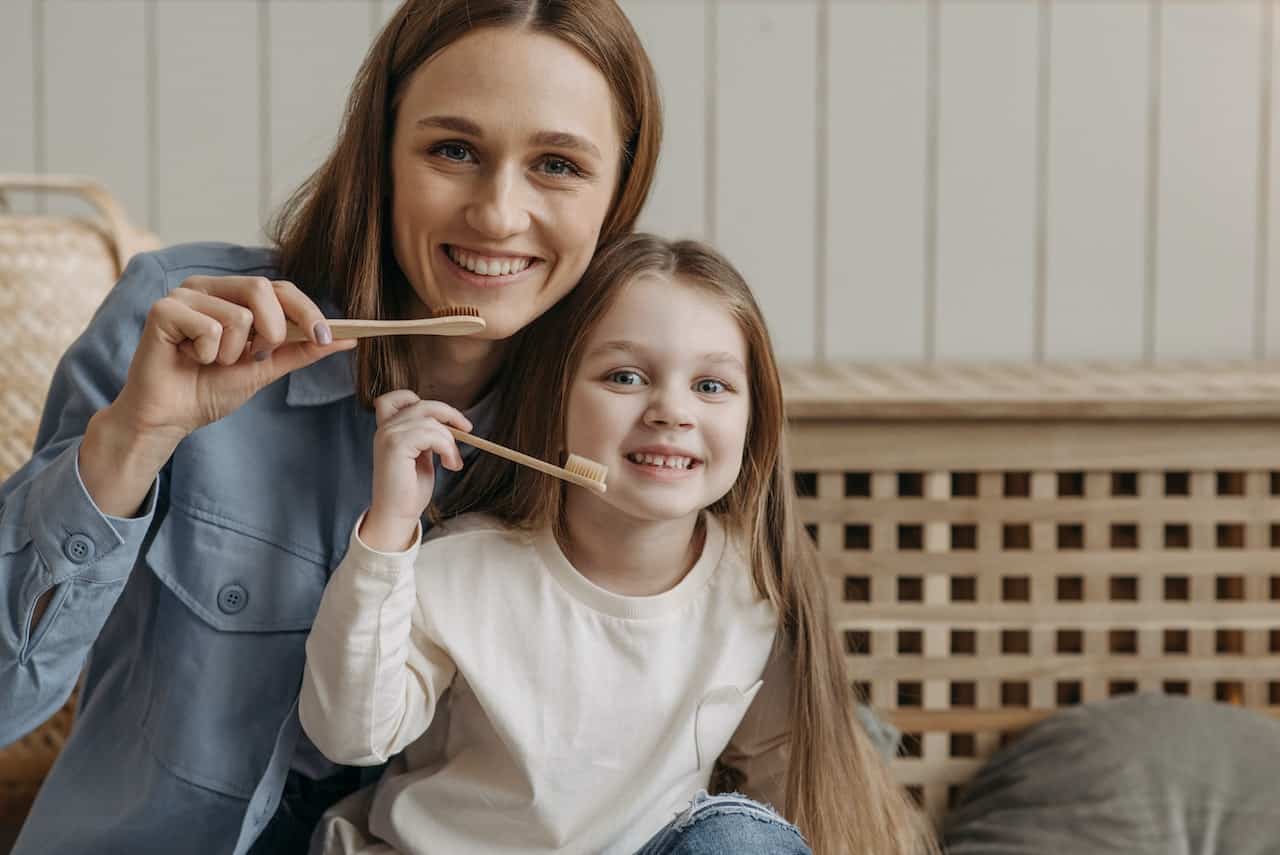
- 1. What’s The Brush Head Size?
- 2. Look For Soft Bristles For The Sensitive Mouth
- 3. Easy Grip handle
- 4. Is the Brush ADA approved?
- 5. Electric vs. Manual: Which is better for the ‘first’ brush?
- 6. Anything for Kids That Need Special Kids??
- 7. Skip The Cheap, Brandless Toothbrushes
- Wrapping Up
- Frequently Asked Questions
Kids grow up too soon, don’t they?
After watching your baby drool, fuss, and gnaw at everything in sight, you finally get relief when you see those little teeth appearing.
And over the next few years, their adorable gummy smile will develop into a complete set of teeth. But now parents have another problem at hand.
It is how to keep these teeth clean?
The first step to good oral hygiene habits for your child is to know what kind of toothbrush is best for them.
Their ‘first’ toothbrush experience will go a long way in cultivating healthy dental hygiene. Choosing the wrong first brush can just make them not want to brush again and throw tantrums every day.
No parents want that! Right.
That’s why, in this blog, we have provided you with a detailed guide to help you decide the right first brush for your child and make them fall in love with brushing over time.
So, let’s get started.
1. What’s The Brush Head Size?
There is no such thing as a “one-size-fits-all.” Since a child’s mouth is significantly smaller than an adult’s, you can’t use a regular brush on them.
Choose a small brush to fit and glide easily within your child’s mouth. Brushes designed exclusively for infant oral care are available from most toothbrush manufacturers, with the proper age range specified on the box.
Your child’s teeth should quickly get wrapped along with both sides and the entire front with the right-sized brush. If a brush doesn’t cover the entire surface area of a tooth at once, consider going up a size.
Here are some tips for choosing the right brush head size for your child:
- Baby Size: This is one of the most miniature-sized toothbrushes used for kids with milk teeth and is also good enough for up to 6 years old kids. The length of this brush is generally 10 to 13 cm.
- Small Size: These sized bruises come for kids with mixed teeth. Kids between the ages of 6 years to 12 years can use this sized brush. The length of this brush is about 13 to 15 cm. There are various customized brushes so that you can pick the one your kid likes.
- Medium Size: This sized brush is available for kids between 12 and 18 years old. Kids with this age range have lost almost all milk teeth, so this brush size is suitable for them. The length of this brush is generally 15 to 18 cm.
- Large Size: These are the regular-sized brushes available for 18 yrs and above people. The length of this brush is generally 18 to 20 cm.
2. Look For Soft Bristles For The Sensitive Mouth
Children aren’t always gentle brushes, especially when learning good brushing skills. Brushing with a soft bristle brush helps preserve their sensitive gums and enamel throughout the brushing process. Soft bristles are especially useful for young children who are still teething, as they are kinder on sensitive gums.
There are several toothbrushes bristle varieties available on the market. They come in a variety of soft, medium, and hard textures. Brushes with extra rubber bristles should be avoided since they might cause gum irritation and provide no additional cleaning power.
Here’s how to choose the bristles for your child’s brush:
- Bristle’s Shape: Bristles with an angular form are more likely to fray, so search for rounder bristles. Many dentists recommend rounded, soft bristles for a child’s first toothbrush.
- Bristle’s Material: Avoid bristles that encourage the use of rubber.
- Bristle’s Texture: Your child’s first toothbrush requires soft bristles. For effective tooth cleaning that won’t irritate sensitive gums and is available in a variety from extra soft to extra complex.
3. Easy Grip handle
When your child is starting to brush, you should think about the handle so that they can use it without your assistance. Toothbrush handles are typically available in a variety of sizes and forms.
When it comes to choosing a suitable toothbrush handle, there are no hard and fast rules. Instead, concentrate on picking the most comfortable handle for your child to hold. If your child finds the toothbrush challenging to grip, he or she is unlikely to brush for the whole two minutes recommended.
Avoid brushes with a bulky handle or a huge head. Giving your kid a brush with securely fit handles will provide them with greater control and make the procedure more effective.
Brushing may be a joyful experience for youngsters if they have an easy, softer, and comfortable grip with a child-friendly handle with lights, music, or their favorite cartoon characters etched on it. Many kids’ toothbrush brands provide unique shaped brush handles to motivate children to brush.
Because children don’t have the manual skill to brush their teeth entirely until later in life, a handle with a more oversized grip is preferable. A brush with a rubberized handle will make it simpler to hold.
4. Is the Brush ADA approved?
Always check for the ADA Seal of Acceptance when purchasing a toothbrush. To assure safety, quality, and dependability, every firm that creates dental care goods, including toothbrush makers, must apply for Seal of Acceptance clearance.
When you’re in the market for a new toothbrush, seek one that has the ADA Seal of Approval. This signifies that your toothbrush has undergone extensive testing to guarantee that it cleans and protects your mouth effectively. If you’re not sure which brush to use, see your dentist.
The ADA Seal of Approval certifies that the product meets the following criteria:
- The tips of the bristles are safe.
- The handle is durable enough to be used regularly.
- Brushing as often as suggested will prevent bristles from falling out.
- Brushing helps to prevent plaque buildup and gum disease in its early stages.
For electric toothbrushes, the ADA Seal of Approval ensures the same. Furthermore, it provides that the disposable brush heads have undergone extensive safety testing and clinical examinations. This demonstrates that the brush is suitable for use on teeth, oral tissue, and dental appliances such as braces.
5. Electric vs. Manual: Which is better for the ‘first’ brush?
Electric toothbrushes continue to be a popular choice among both children and adults. Although an electric toothbrush can be used for your child’s first brush, make sure to stick to the same tips we stated above: soft bristles, a tiny head, and a handle that is simple to grasp.
Many electric toothbrushes have oversized handles, so seek one that is particularly made for children since they will have small and tiny handles. The built-in timer on certain electric toothbrushes is a fun feature that helps you and your child stick to the two-minute brushing regimen advised twice a day.
One study by the American Journal of Orthodontics & Dentofacial Orthopedics found that an electric brush helps remove a greater amount of plaque than a manual one, thanks to the rotating and oscillating action.
On the other hand, manual toothbrushes are nearly as effective as electric toothbrushes. Their gentle bristles assist clean dental surfaces and are capable of fully removing plaque and even food deposits.
Some kids may even prefer manual toothbrushes to electric brushes since they don’t enjoy the vibration or the propelled action. It’s all a personal choice in the end.
6. Anything for Kids That Need Special Kids??
Oral hygiene is critical for every child. Unfortunately, many children with special needs such as autism, locomotive disability among others can find this seemingly easy experience quite difficult.
You must lead them through this process as a parent or caregiver and make it as enjoyable as possible. It might be difficult to choose the perfect toothbrush for your child with special needs, but don’t worry. We’ve researched two of the finest toothbrushes for kids with special needs to make their brushing experience a bit smoother.
They are listed below:
- Kids Dyny Toothbrush – Kids Dyny brush is a gentle toothbrush specially designed for children. Its small head is perfect for easy maneuvering in their small mouths. Moreover, it comes with a variety of handles that attract kids’ attention. ICPA Dyny kids toothbrush is one of the popular toothbrushes for children to prevent plaque and cavities.
- bA1 Sensory – This three-sided toothbrush provides 200{ac2a009b1ab48831539664612c3590d3a3d8d03cf5106270341ad20ec3b355a9} more coverage with each stroke and has extremely soft bristles to avoid sensory overload. This is especially beneficial in autistic kids. The bristles may extend to different tooth widths thanks to the distinctive expansion pleats, making it ideal for children with movement difficulties.
- Collis Curve – Special Needs Toothbrush – If you want to give your autistic child the finest tooth brushing experience possible, you should acquire a toothbrush that is specifically developed for sensitive gums. This toothbrush has flexible and soft bristles that will reach all of your child’s teeth without causing any pain.
- Ultrasonic 360 Degree U-Shaped Toothbrush – If your child is not happy about brushing time, it’s time to try an automated toothbrush instead. This automated toothbrush is certain to make brushing more enjoyable for them. It’s designed without a handle, so kids don’t have to hold it when cleaning their teeth. They only need to put it in their mouth, and it will take care of the rest It uses ultrasonic technology is used, which reduces the sensory impact that normal toothbrushes have.
7. Skip The Cheap, Brandless Toothbrushes
When purchasing a toothbrush, it is critical to get one from a reliable manufacturer. While low-cost, no-name brand toothbrushes may seem like a good choice for the first toothbrush, it’s often not feasible.
A good toothbrush is an investment for your kid’s health.
Cheap, brandless brushes aren’t created with the same manufacturing standards as many recognized brands. Moreover, cheaper toothbrushes may be unhygienic or harmful since many of them are mass manufactured. These brushes have hard bristles, which can damage your child’s teeth and gums.
Choose the toothbrush that best suits your kid’s needs (but make sure to replace it every three months!). Since your child will use their toothbrush regularly, it’s worth it to spend a bit more to get high quality.
Wrapping Up
Choosing the ‘first’ toothbrush for your child is just the first step towards their journey to good dental health.
With millions of new toothbrushes popping in the market every second, it can be hard to decide the ‘right’ ones. However, if you stick with the above guidelines, you will surely find the right brush.
Frequently Asked Questions
When should I get my first toothbrush?
We recommend getting the first toothbrush as soon as the first tooth appears. As soon as the tooth appears, the plaque build-up can start.
When should I introduce electric toothbrushes?
If you are thinking of introducing an electric toothbrush for your child, wait until they are at least three years old. This is because electric toothbrushes can be powerful and up until 2 years old baby teeth are sensitive and loose.
How do I brush my one-year-old kid’s teeth?
You can brush your one-year-old kid’s teeth with a washcloth or use a finger brush available in the market.
What is the best first toothbrush?
There are many top brands that provide the best first toothbrush for your child. Examples are Colgate My first toothbrush, Jordan Baby Step 1 toothbrush, etc.
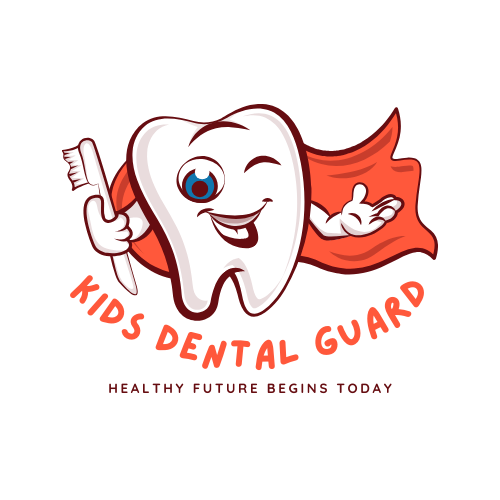
![10 Best Natural Toothpaste for 3-5 Years Kids [Buying Guide]](https://www.kidsdentalguard.com/wp-content/uploads/2021/12/Best-natural-toothpaste-for-3-5-years-kids.jpg)

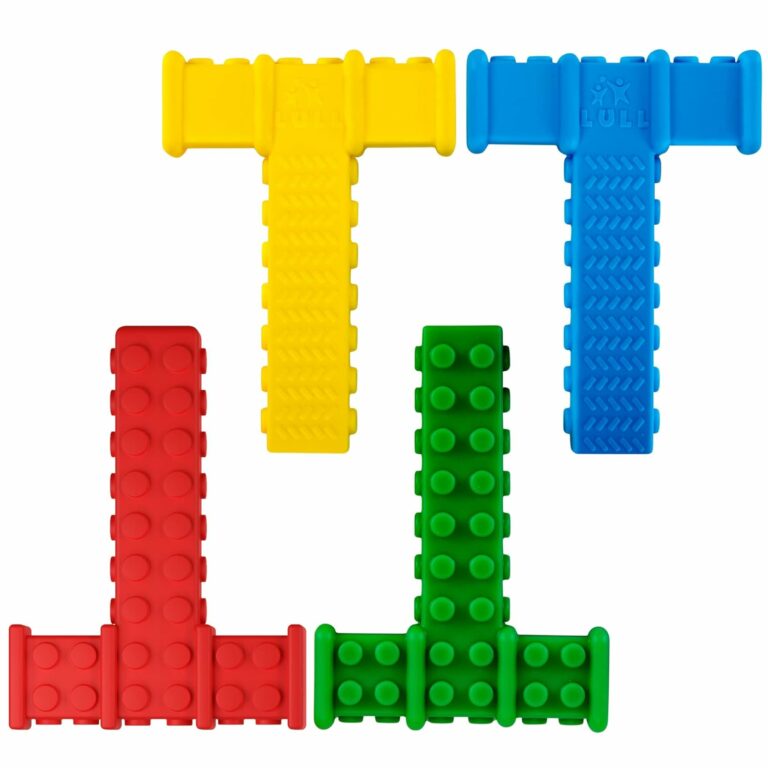
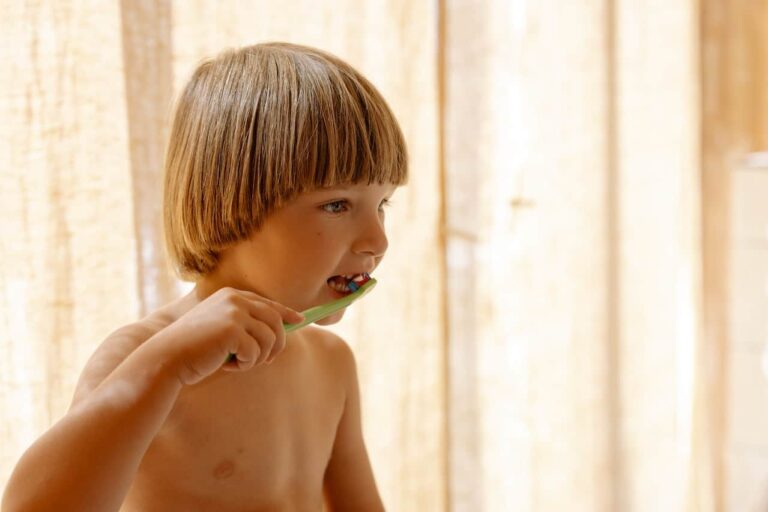
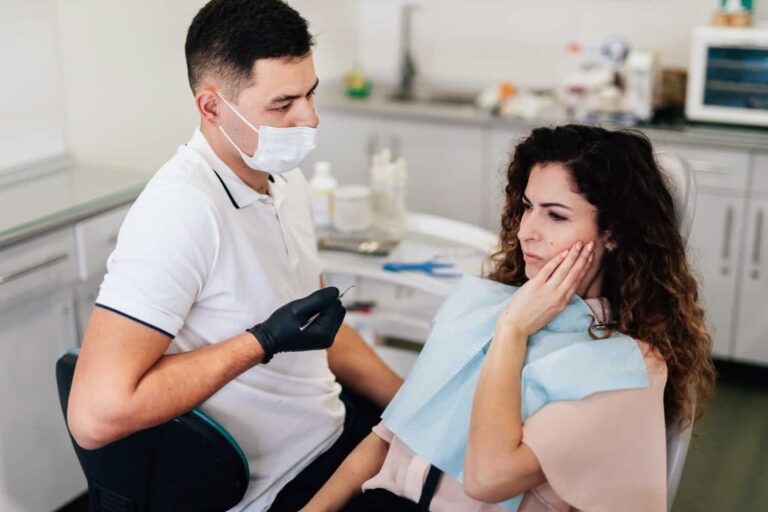
![9 Best Herbal Toothpaste for 1-2 Year Kids [Buyer’s Guide]](https://www.kidsdentalguard.com/wp-content/uploads/2021/12/Best-herbal-toothpaste-for-1-2-year-kids.jpg)